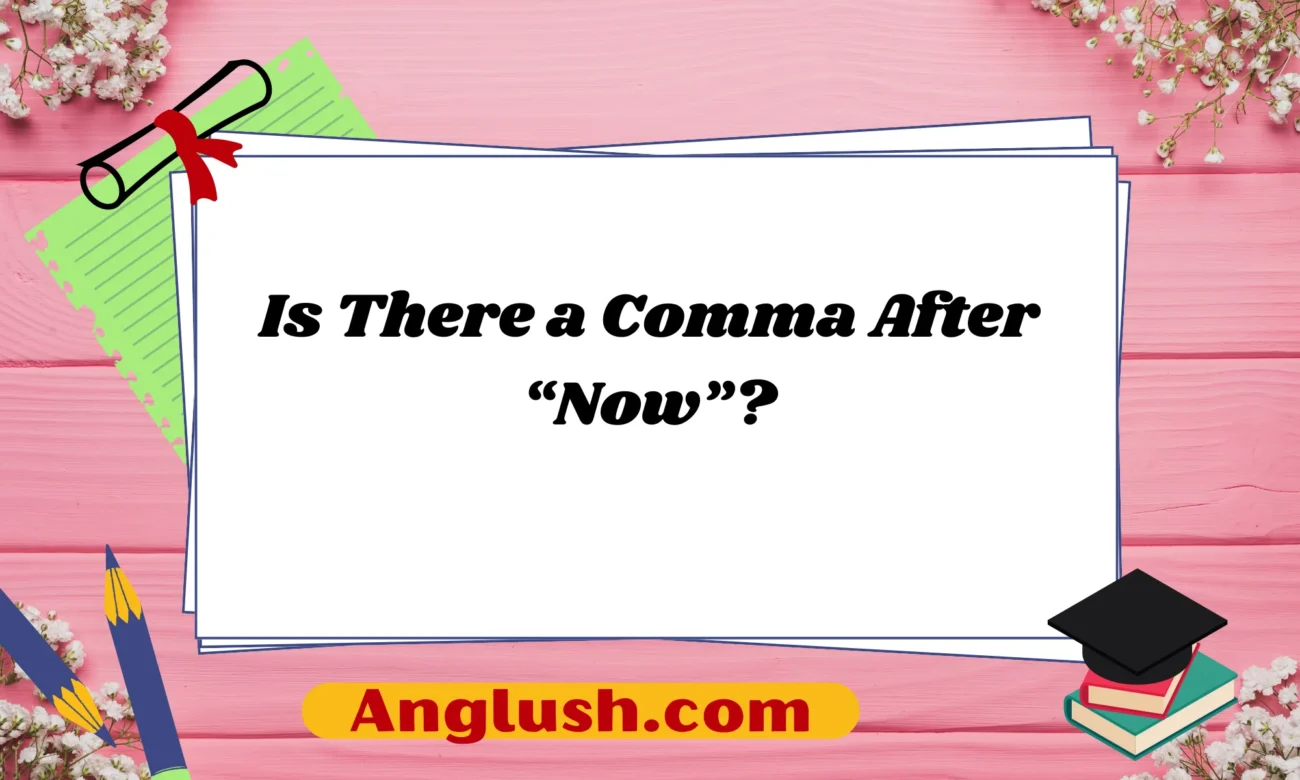Introduction
Punctuation plays a crucial role in how we communicate in writing. Even the smallest marks—like commas—can change the meaning of a sentence or affect its readability. One common point of confusion is whether there should be a comma after the word “now.”
Should you always place a comma after “now”? The answer depends on how the word is used in a sentence. In this article, we’ll explore when a comma is necessary, when it isn’t, and how different uses of “now” affect punctuation and sentence flow. We’ll also provide clear examples and alternatives to help you use “now” correctly in professional, polite, and casual settings.
When Should You Use a Comma After “Now”?
Whether or not you place a comma after “now” depends on its role in the sentence. Below are the most common scenarios.
1. When “Now” Is an Introductory Element
When “now” is used at the beginning of a sentence to introduce an idea or emphasize a point, it should be followed by a comma.
✅ Correct:
- Now, let’s move on to the next topic.
- Now, I see what you meant.
- Now, you should be careful.
In these cases, the comma helps create a natural pause, making the sentence easier to read and understand.
2. When “Now” Is Used as an Interjection
If “now” is used in the middle of a sentence as an interjection or to create emphasis, it should also be followed by a comma.
✅ Correct:
- We need to leave, now, before it gets too late.
- That’s enough, now, let’s stay focused.
In these examples, the commas set off “now” as an interruption or a transitional element.
3. When “Now” Is Followed by a Direct Address
If “now” is followed by a name or direct address, a comma should be placed after it.
✅ Correct:
- Now, John, I want you to listen carefully.
- Now, Sarah, let’s get started.
The comma helps clarify that the speaker is addressing someone directly.
When Should You NOT Use a Comma After “Now”?
There are situations where a comma is not needed after “now.” Here are some key instances:
1. When “Now” Is an Adverb in a Sentence
If “now” is used as a standard adverb (describing when something happens), a comma is not necessary.
✅ Correct:
- I now understand the problem.
- She is now working from home.
- We are now ready to start.
Here, “now” is modifying a verb, and no comma is needed because the sentence flows naturally without a pause.
2. When “Now” Connects Ideas Without a Pause
If “now” is used within a sentence to transition smoothly, a comma may not be necessary.
✅ Correct:
- Now is the time to act.
- I see now why you were concerned.
A comma is not required because “now” does not create an abrupt shift in the sentence.
Polite, Professional, and Casual Alternatives to “Now”
In both writing and speech, “now” is often used to transition between ideas, call attention to something, or add emphasis. However, depending on the tone and setting, you may want to use alternatives that sound more polite, professional, or casual.
Here are some options based on different contexts:
Polite Alternatives
These alternatives are ideal for formal writing, workplace emails, or professional conversations.
- At this moment – “At this moment, we are reviewing your request.”
- As of now – “As of now, no further action is needed.”
- Currently – “Currently, we are working on a solution.”
- At present – “At present, our team is handling the issue.”
- As things stand – “As things stand, the project is on schedule.”
Professional Alternatives
These options work well in business settings, reports, or formal discussions.
- Effective immediately – “Effective immediately, the new policy will be enforced.”
- Moving forward – “Moving forward, we will implement these changes.”
- As of today – “As of today, all employees must comply with the new guidelines.”
Casual Alternatives
These are great for friendly conversations, informal emails, or texting.
- Right now – “Right now, I’m heading to the meeting.”
- At this point – “At this point, we should probably leave.”
- At the moment – “At the moment, I’m finishing up a project.”
11 User-Friendly Texting Examples
Here are some common texting scenarios where “now” is used, along with alternatives:
- “Now, let’s get started!” → “Alright, let’s get started!”
- “I need an update now.” → “Can you give me an update ASAP?”
- “Now, don’t be late!” → “Please don’t be late!”
- “Now that’s what I call a great idea!” → “Wow, that’s a great idea!”
- “Where are you now?” → “Where are you at the moment?”
- “Now, let’s see what happens next.” → “Let’s see what happens next.”
- “Now, listen to me carefully.” → “Listen to me carefully, okay?”
- “I need you now.” → “I need you right away.”
- “Now is not the time for jokes.” → “This isn’t the time for jokes.”
- “Now, let’s focus on what matters.” → “Let’s focus on what matters.”
- “Now, tell me everything!” → “Go ahead, tell me everything!”
These texting alternatives help maintain clarity and tone while avoiding unnecessary commas.
Conclusion
The use of a comma after “now” depends on its function within a sentence. If “now” introduces an idea, acts as an interjection, or precedes a direct address, a comma is necessary. However, when “now” functions as an adverb or integrates smoothly within a sentence, a comma is not needed.
Additionally, replacing “now” with alternatives can enhance clarity, professionalism, and tone. Whether you’re communicating in a formal, professional, or casual setting, choosing the right words ensures your message is both effective and appropriate.

